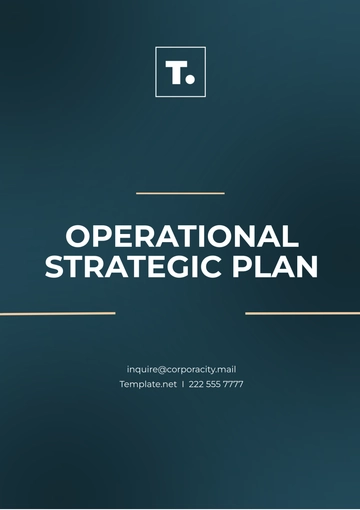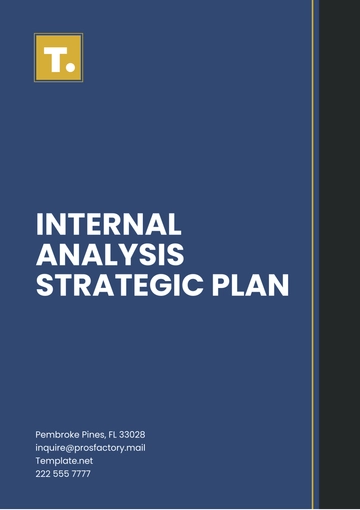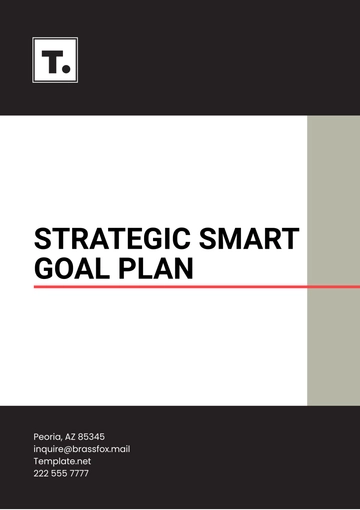Free Audit Strategic Plan

Company: [YOUR COMPANY NAME]
Department: [YOUR DEPARTMENT]
Prepared by: [YOUR NAME]
I. Executive Summary
The audit strategic plan outlines the objectives, priorities, and methodologies for conducting audits within [YOUR COMPANY NAME]. It aims to enhance the effectiveness and efficiency of the audit function, ensuring alignment with organizational goals and compliance requirements.
II. Audit Vision and Mission
A. Vision Statement
To be a trusted and valued partner in promoting accountability, transparency, and continuous improvement within [YOUR COMPANY NAME].
B. Mission Statement
The internal audit department is committed to providing independent and objective assurance and consulting services designed to add value and improve the organization's operations.
III. Audit Objectives
A. Overall Audit Objective
To assist the organization in accomplishing its objectives by bringing a systematic, disciplined approach to evaluate and improve the effectiveness of risk management, control, and governance processes.
B. Specific Objectives
Conduct risk-based audits to assess the effectiveness of internal controls.
Provide recommendations for improving internal processes and controls.
Monitor the implementation of audit recommendations to ensure their effectiveness.
IV. Audit Scope
A. Internal Audit Scope
The internal audit function will focus on financial and operational audits, compliance audits, and special investigations.
B. External Audit Scope
External audits will be conducted annually by an independent external audit firm to provide assurance on the accuracy of financial statements.
V. Risk Assessment
A. Risk Identification
Key risks identified include operational risks, financial risks, compliance risks, and strategic risks.
B. Risk Mitigation
Strategies to mitigate risks include implementing robust internal controls, regular monitoring, and ongoing risk assessments.
VI. Audit Methodology
A. Audit Approach
The audit approach will include risk assessment, planning, fieldwork, reporting, and follow-up.
B. Resource Allocation
Resources, including staff and technology, will be allocated based on the risk assessment and audit plan.
VII. Communication and Reporting
A. Stakeholder Communication
Regular communication with stakeholders, including management and the audit committee, will be maintained throughout the audit process.
B. Reporting Mechanisms
Audit findings and recommendations will be reported through formal audit reports and presentations to the audit committee.
VIII. Monitoring and Evaluation
A. Audit Performance
Audit performance will be monitored through key performance indicators, including audit completion rates and recommendation implementation rates.
B. Continuous Improvement
The audit function will undergo continuous improvement through feedback, training, and benchmarking against industry best practices.
IX. Budget and Resources
A. Budget Allocation
Budget Category | Amount ($) | Percentage (%) |
|---|---|---|
Personnel Expenses | 200,000 | 40% |
Audit Software | 50,000 | 10% |
Training and Development | 30,000 | 6% |
Travel and Expenses | 20,000 | 4% |
Professional Memberships | 10,000 | 2% |
Miscellaneous Expenses | 90,000 | 18% |
Contingency | 100,000 | 20% |
Total Budget Allocation | 500,000 | 100% |
B. Resource Requirements
Resources required include skilled audit professionals, audit software, and access to relevant information and systems.
X. Conclusion
The audit strategic plan aims to enhance the effectiveness and efficiency of the audit function within [YOUR COMPANY NAME], ensuring that audits are conducted in accordance with professional standards and best practices. It provides a roadmap for the audit function, guiding its activities to add value and improve the organization's operations.
- 100% Customizable, free editor
- Access 1 Million+ Templates, photo’s & graphics
- Download or share as a template
- Click and replace photos, graphics, text, backgrounds
- Resize, crop, AI write & more
- Access advanced editor
Improve your auditing practices with the Audit Strategic Plan Template from Template.net. This comprehensive template, editable in our AI Editor Tool, helps you plan and execute audits strategically. Customizable to suit your auditing needs, it ensures your audits are thorough, efficient, and aligned with your organization's goals. Get it today!





























